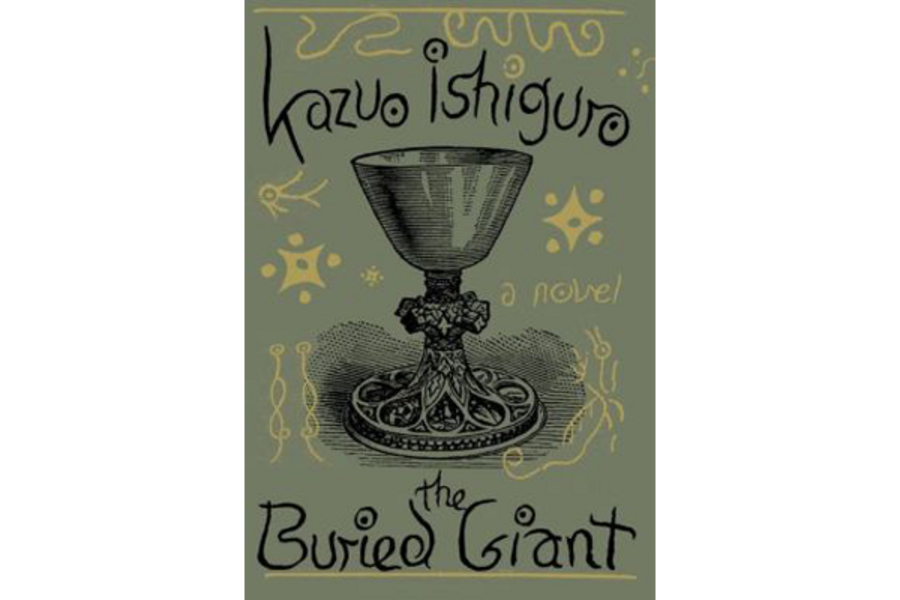'The Buried Giant' – the much anticipated seventh novel of Kazuo Ishiguro – does not disappoint
Loading...
The first question readers will most likely be asking about Kazuo Ishiguro’s seventh novel, The Buried Giant, will be, “Is it worth the decade-long wait?” The short answer is a resounding yes.
Ironically, this is a book that almost didn’t happen. During a talk at the Cheltenham Book Festival last fall, Ishiguro revealed that his wife’s initial reaction to an early draft nearly shelved its writing. Her judgment that “this will not do” was a “bit harsh,” Ishiguro admitted, as reported by London’s The Telegraph. “So I kind of put it aside. It took me a while to work up the energy to start again from scratch.”
Best known for the Man Booker Prize-winning “The Remains of the Day” (1989), whose 1993 screen adaptation was nominated for eight Academy Awards, the Japanese-born author, who has lived in Britain since the age of 5, has built an unparalleled career writing quiet titles charged with meticulously detailed observations as they build to epiphanic climaxes.
Love, too, looms large throughout Ishiguro’s oeuvre, from the unspoken (“Remains”) to the disconnected (“The Unconsoled”) to the hidden (“When We Were Orphans”) to the impossible (“Never Let Me Go”). In “Giant,” Ishiguro explores love that lasts – but at what cost?
The narrative is seemingly straightforward: An older couple embarks on a journey to reunite with their estranged son whom they have not seen in many years. Their story is set some millennium-and-a-half-ago in Ishiguro’s adopted homeland, amid the original Anglo-Saxons in the making. It covers just four days and three nights – and yet lifetimes of myth, allegory, and epic discoveries are contained within.
Axl and Beatrice are medieval Britons living in a time of tenuous peace among the recently defeated Saxons. That they are elderly is not the cause of their fragmented memories: “It’s queer the way the world’s forgetting people and things from only yesterday and the day before that,” Beatrice observes. “Like a sickness that come over us all.”
One truth, however, remains unchanging: the aging couple’s enduring love for each other. Their mutual assurances never waver, as Beatrice repeats “in the manner of a litany ‘Are you still there, Axl?’ to which he would respond, ‘Still here, princess.’ ”
The decision to leave their village is prompted by loss, when their single candle is forcibly snatched away. Unwilling to remain in darkness, they agree, “There’s a journey we must go on, and no more delay.” Somehow, they know that, even with their slow steps, their son’s home is “a few days walk at most.”
Those few days bring all manner of encounters. They meet an eerie old woman who stays alive only to torment a boatman when he returns to his childhood home. They are accompanied by Wistan, a Saxon warrior, and Edwin, a young boy with a mysterious wound.
They are also joined by Sir Gawain, the last surviving knight of King Arthur’s Round Table, now a wizened old man with only his trusty steed for company.
They seek shelter in an unholy monastery. They escape swarming pixies. They are confronted by orphan siblings with a poisonous goat. They alternately flee and hunt a legendary she-dragon. All the while, they work to escape the mist of forgetting and to regain what they can of their past. Knowing, of course, is not without severe consequences.
Throughout “Giant,” Ishiguro nimbly plays with both content and form. He imbues his leading man and woman with much more than just simple appellations: Axl means “peace,” which always seems elusive; Beatrice, meaning “happiness,” is surely inspired by Dante’s embodiment of guiding true love in “The Divine Comedy.”
Beyond his peripatetic narrative, Ishiguro deftly manipulates perspective over 17 chapters. The first and final feature an unnamed “I” (revelation forthcoming at book’s end), while every fourth chapter belongs to Edwin, and Sir Gawain takes control of two chapters. The changing viewpoints underscore the mutability of memories, and hint at the unreliability of storytelling. And yet, in this as with Ishiguro’s previous fiction, the mesmerizing prose ensures that the pages will turn swiftly.
Without a doubt, “Giant” is Ishiguro’s most complex book thus far, managing to combine elements of Edenic epic, Roman myth, Arthurian quest, Tolkien fantasy, philosophical ruminations, religious dialectics, literary experimentation, and more to create an exquisitely rendered, albeit disturbing love story set against the unresolved threat of war – past and future both. The ultimate question lingers: What price are we willing to pay to remember, to know?
Ishiguro’s 10-year investment comes to eloquent fruition here. The result is a provocative, multilayered mosaic.
Terry Hong writes BookDragon, a book review blog for the Smithsonian Asian Pacific American Center.








